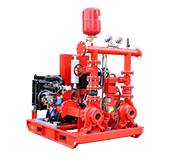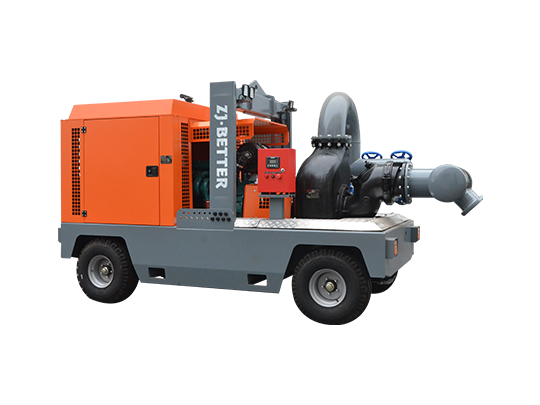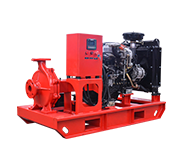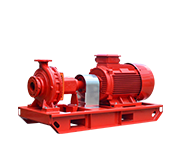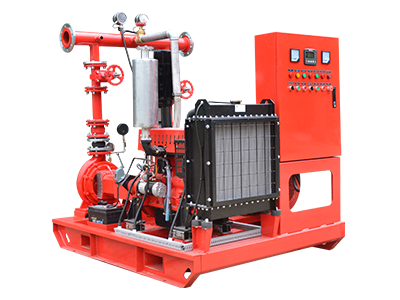- Fire Pump System
-
- UL-Listed Fire Pump SetEDJ End Suction Fire Pump SetEDJ Fire Pump SetEJ Small Flow Fire Pump SetFire Pump PackagesContainerized fire pump setDiesel Fire Pump SetED Small fire pump setElectric Jockey Fire Pump SetFire Pump Set with Jockey PumpFire Pump SystemSplit Case Fire Pump SetMutistage EDJ Fire Pump SetDiesel Fire Pump Set with Jockey PumpFire Fighting Pump SystemElectric Diesel Jockey Fire Pump SetFire Fighting Pump Set with Jockey PumpSmall Capacity Electric Fire Pump SetDJ Fire Pump Set with Jockey PumpEJ Fire Pump SetED Fire Pump Set (Electric+Diesel pump)Diesel Engine Fire Pump SetDiesel Fire Jockey PumpSmall Fire Pump SetEDJ Fire Pump SystemFire Water Pump SetFire Pump AssemblyDJ Small Flow Fire Pump SetCummins Engine Fire Pump Set
- Mobile Pump Unit
-
- Split Case Series Mobile Pump TruckSelf Priming Series Mobile Pump TruckCentrifugal diesel driven dewatering pumps open frame trailerFlow-mixing Mobile Pump TruckFlow-mixing Mobile Pump TruckManure Pump TruckP12 modle mobile Pump truckP10 Modle Mobile Pump Truck1000m³Self Priming Series Mobile Pump TruckLarge Flow Non-Clogging Mobile Fire Pump TrailerTrailer Mounted Fire PumpFire Emergency Mobile Pump TruckDiesel Engine Emergency Mobile Trailer Pump
- Diesel Fire Pump
-
- UL Listed Diesel End Suction Fire PumpXBC-S Diesel Split Case Fire PumpXBC-IS Diesel End Suction Fire PumpXBC-D Diesel Multistage Fire PumpVertical Turbine Diesel Engine Fire PumpDiesel Engine Single-Stage Centrifugal PumpXBC-IS Diesel End Suction Fire Fighting PumpXBC-S Diesel Engine Split Case Fire PumpDiesel Engine End Suction Fire PumpXBC-IS Diesel End Suction Fire PumpsZWC Diesel Engine Self Priming Pump for IrrigationDiesel Engine End Suction Fire Fighting PumpXBC-S Heat Exchange Diesel End Suction Fire PumpXBC-XA Diesel Engine End Suction Fire PumpXBC-IS Diesel Engine Fire PumpDiesel Engine End Suction Fire PumpXBC-IS Diesel Engine End Suction Fire PumpXBC-ISO Diesel Fire Fighting PumpPortable Fire PumpFire Booster Pump

Email: zjbetter@119pump.com
Tel:+86 15336708022(Gloria) +86 13306708055 (Ivy) +86 13357006058 (Serena) +86 13357022877 (Wendy) +86 17757009882(Kate)
Fax:0086-570-3010238
-

- Main uses of mobile pump trucks
- 2023.10.09
- Mobile pump trucks, also known as concrete pump trucks, serve various important functions in construction and related industries. These trucks are equipped with specialized pumps that can transport and deliver concrete, among other materials, to construction sites. Here are some of the main uses of mobile pump trucks: Concrete Placement: One of the primary uses of mobile pump trucks is to transport and place concrete at construction sites. They can reach elevated or hard-to-access areas, such as high-rise buildings or locations with limited space. High-Rise Construction: Mobile pump
-

- In addition to the fire pump, what other parts does the fire water supply system consist of?
- 2023.10.07
- A fire water supply system is a crucial component of a building's fire protection infrastructure. In addition to the fire pump, it consists of various other parts and components to ensure an adequate and reliable water supply in the event of a fire. These components typically include:
-

- Fire pump electric valve positioning
- 2023.09.22
- Positioning electric valves in a fire pump system is crucial for controlling the flow of water and ensuring the system's proper operation during a fire emergency. Proper valve positioning helps regulate water supply, pressure, and distribution to fire protection devices like sprinklers, standpipes, and hose stations. Here's a general guide on how to position electric valves in a fire pump system:
-

- Fire pump electric valve positioning
- 2023.09.22
- Positioning electric valves in a fire pump system is crucial for controlling the flow of water and ensuring the system's proper operation during a fire emergency. Proper valve positioning helps regulate water supply, pressure, and distribution to fire protection devices like sprinklers, standpipes, and hose stations. Here's a general guide on how to position electric valves in a fire pump system:
-
.jpg)
- What issues should be paid attention to when using mechanical seals for fire pumps?
- 2023.09.22
- Using mechanical seals for fire pumps is critical to ensuring the reliable operation of these essential safety systems. Fire pumps are designed to provide water flow to fire sprinkler systems in case of emergencies, so any issues with their seals can have serious consequences. Here are some key issues to pay attention to when using mechanical seals for fire pumps: Seal Material Selection: Ensure that the mechanical seal materials are compatible with the fluids being pumped, which typically include water and sometimes chemicals used for fire suppression. Material compatibility is crucial
-
.jpg)
- How to solve the problem of poor water pumping in fire pumps?
- 2023.09.20
- Ensuring reliable and efficient water pumping in fire pumps is crucial for fire safety. If you're experiencing problems with poor water pumping in a fire pump, it's essential to address these issues promptly. Here are steps to help solve the problem: Inspect and Maintain the Fire Pump: Regularly inspect and maintain the fire pump according to manufacturer recommendations and local regulations. This includes checking for any damage, worn-out parts, or signs of corrosion. Verify Power Supply: Ensure that the electrical power supply to the fire pump is stable and meets the required vo
-

- Introduction to the characteristics of various commonly used valves for diesel engine fire pumps
- 2023.09.19
- Diesel engine fire pumps are critical components of fire protection systems, and they rely on various valves to control the flow of water and maintain the system's integrity. Here's an introduction to the characteristics of commonly used valves in diesel engine fire pump systems:
-

- How to maintain fire pump equipment?
- 2023.09.18
- Maintaining fire pump equipment is crucial to ensure its reliability and effectiveness in the event of a fire emergency. Regular maintenance helps identify and address potential issues before they become critical. Here are the steps to maintain fire pump equipment: Follow Manufacturer's Guidelines: Begin by consulting the manufacturer's guidelines and recommendations for maintenance. These guidelines provide specific instructions and schedules for maintaining the equipment. Create a Maintenance Schedule: Develop a maintenance schedule based on the manufacturer's recommendations and lo
-

- How to maintain fire pump equipment?
- 2023.09.18
- Maintaining fire pump equipment is crucial to ensure its reliability and effectiveness in the event of a fire emergency. Regular maintenance helps identify and address potential issues before they become critical. Here are the steps to maintain fire pump equipment: Follow Manufacturer's Guidelines: Begin by consulting the manufacturer's guidelines and recommendations for maintenance. These guidelines provide specific instructions and schedules for maintaining the equipment. Create a Maintenance Schedule: Develop a maintenance schedule based on the manufacturer's recommendations and lo
-

- Precautions for using fire pumps
- 2023.09.15
- Fire pumps play a critical role in fire protection systems, ensuring a reliable source of water to combat fires. To use fire pumps safely and effectively, it's important to follow specific precautions and guidelines. Here are some key precautions for using fire pumps:
-

- Introduction of Mobile pump unit
- 2023.09.14
- BETTER Technology's series of Mobile pump unit appears to have achieved significant success and expertise in urban drainage and mine rescue applications. Here is some key information about these devices: Purpose: Mobile pump unit are specialized equipment designed for rapid drainage, particularly suited for urban drainage and emergency rescue missions. They boast strong maneuverability, enabling quick responses to reach areas requiring drainage. They can swiftly remove accumulated water, reducing flood risks and supporting rescue efforts. Water Storage Capacity: BETTER Technology's Mob
-

- Introduction of Mobile pump unit
- 2023.09.14
- BETTER Technology's series of Mobile pump unit appears to have achieved significant success and expertise in urban drainage and mine rescue applications. Here is some key information about these devices: Purpose: Mobile pump unit are specialized equipment designed for rapid drainage, particularly suited for urban drainage and emergency rescue missions. They boast strong maneuverability, enabling quick responses to reach areas requiring drainage. They can swiftly remove accumulated water, reducing flood risks and supporting rescue efforts. Water Storage Capacity: BETTER Technology's Mob
-

- Introduction of Mobile pump unit
- 2023.09.14
- BETTER Technology's series of Mobile pump unit appears to have achieved significant success and expertise in urban drainage and mine rescue applications. Here is some key information about these devices: Purpose: Mobile pump unit are specialized equipment designed for rapid drainage, particularly suited for urban drainage and emergency rescue missions. They boast strong maneuverability, enabling quick responses to reach areas requiring drainage. They can swiftly remove accumulated water, reducing flood risks and supporting rescue efforts. Water Storage Capacity: BETTER Technology's Mob
-

- Introduction of Mobile pump unit
- 2023.09.14
- BETTER Technology's series of Mobile pump unit appears to have achieved significant success and expertise in urban drainage and mine rescue applications. Here is some key information about these devices: Purpose: Mobile pump unit are specialized equipment designed for rapid drainage, particularly suited for urban drainage and emergency rescue missions. They boast strong maneuverability, enabling quick responses to reach areas requiring drainage. They can swiftly remove accumulated water, reducing flood risks and supporting rescue efforts. Water Storage Capacity: BETTER Technology's Mob
-

- Introduction of Mobile pump unit
- 2023.09.14
- BETTER Technology's series of Mobile pump unit appears to have achieved significant success and expertise in urban drainage and mine rescue applications. Here is some key information about these devices: Purpose: Mobile pump unit are specialized equipment designed for rapid drainage, particularly suited for urban drainage and emergency rescue missions. They boast strong maneuverability, enabling quick responses to reach areas requiring drainage. They can swiftly remove accumulated water, reducing flood risks and supporting rescue efforts. Water Storage Capacity: BETTER Technology's Mob
-

- better-technology-group-business-overview
- 2023.09.13
- BETTER TECHNOLOGY GROUP CO., LTD. (hereinafter referred to as "BETTER Tech"), established in 2004, is a company dedicated to providing sled-mounted pump system solutions. The company boasts extensive experience and specialized knowledge in the field of water pumps and distributes its products across various countries and regions. Here is some essential information about BETTER TECHNOLOGY GROUP: Scope of Business: BETTER TECHNOLOGY GROUP primarily engages in the design, development, manufacturing, and sale of sled-mounted pump systems. Their product range encompasses various types of water
-

- How to maintain fire pumps
- 2023.09.12
- Maintaining fire pumps is crucial to ensure they are in proper working condition when needed in case of a fire emergency. Regular maintenance helps extend the life of the pump and ensures it functions correctly. Here are the steps to maintain fire pumps:
-

- What are the dangers of fire pump cavitation?
- 2023.09.11
- Fire pump cavitation is a critical issue that can lead to severe damage to the pump and its components, as well as a reduction in its effectiveness during firefighting operations. The dangers of fire pump cavitation include:
-

- Maintenance of fire pumps
- 2023.09.08
- Maintenance of fire pumps is critical to ensure they function properly when needed in emergency situations. Fire pumps are an essential component of fire protection systems, and their reliability is crucial for the safety of occupants and property. Here are some key aspects of fire pump maintenance:
-

- What are the basic structures of centrifugal pumps?
- 2023.09.07
- Centrifugal pumps are common devices used to transport fluids in various industrial, commercial, and residential applications. They consist of several basic structures and components that work together to create a flow of fluid through the pump. The basic structures of centrifugal pumps include:
-

- What needs to be paid attention to before starting the fire pump?
- 2023.09.06
- Before starting a fire pump, it's essential to perform several checks and procedures to ensure that the pump is in proper working condition and ready for firefighting operations. Here's a checklist of things to pay attention to before starting a fire pump:
-

- Will idling affect the normal operation of the fire pump?
- 2023.09.05
- Idling, or allowing a fire pump to run without water flowing through it, can potentially affect the normal operation and performance of the pump. Fire pumps are designed to operate efficiently and reliably when they are pumping water or another firefighting agent. Running a fire pump without a water source or load can have several consequences:
-

- How is the fire pump ventilated during actual operation?
- 2023.09.01
- During the actual operation of a fire pump, proper ventilation is crucial to ensure the pump and its surrounding area remain cool and that the engine or motor powering the pump receives an adequate air supply. Adequate ventilation helps maintain the pump's performance, prevent overheating, and ensure the pump can deliver the necessary flow and pressure for firefighting. Here's how fire pump ventilation is typically managed during operation:
-
.jpg)
- What is the formula for calculating a fire pump?
- 2023.08.29
- Calculating the size and capacity of a fire pump involves various factors, including the size of the building, the type of fire protection system, required flow rates, pressure considerations, and more. While I can't provide a single formula that encompasses all these variables, I can give you an overview of the general steps involved in sizing a fire pump: Determine Required Flow Rate and Pressure: Calculate the required flow rate (in gallons per minute or liters per second) and pressure (in pounds per square inch or bar) for your fire protection system. This involves considering factors su

